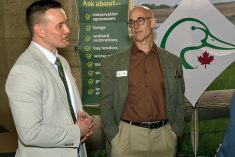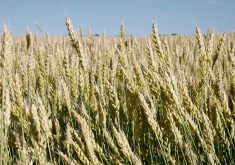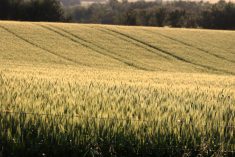WINNIPEG — It’s been a few years in the making, but the Saskatchewan Winter Cereals Development Commission is now officially part of SaskWheat.
The merger of SaskWheat with Saskatchewan Winter Cereals was finalized at the SaskWheat annual general meeting, held Jan. 9 in Saskatoon.
SaskWheat will assume responsibility for managing producer levies collected from growers of winter wheat, fall rye and winter triticale.
Brad White, the former chair of Saskatchewan Winter Cereals, said he spent many hours in 2023 on the details of the transition.
Read Also

Crop quality looks good this year across Prairies
Crop quality looks real good this year, with the exception of durum.
However, the merger was necessary and should provide long-term benefits for winter cereal growers in the province.
“We had gotten to the point where we had a couple of bad years of check-off (revenue), and we weren’t going to do anything, other than have a name,” said White, who farms near Gull Lake, Sask.
The fundamental challenge for Saskatchewan Winter Cereals was inconsistent revenue.
In certain years there were 300,000 to 400,000 acres of winter cereals in Saskatchewan and sufficient levy dollars for the commission.
However, winter wheat and fall rye acreage can vary greatly from year to year, depending on soil moisture and timing of the harvest.
The last couple of autumns have been dry in southern and southwestern Saskatchewan, and 2022 and 2023 winter wheat seeded acreage was 60,000 to 78,000, using Statistics Canada estimates.
In comparison, acreage was 260,000 in 2017.
Lacking cash in recent years, the winter cereals group had enough money to pay a part-time employee, maintain a website and fund a few research projects.
Now that winter cereal growers are part of a much larger organization, there should be reliable research funding and advocacy for winter wheat and fall rye.
One crop that may benefit from the merger is rye, White said.
SaskWheat could fund research on hybrid rye, looking at the different growing regions of the province and where the crop could be the most successful.
“That’s something we just didn’t have the money for.”
At the Jan. 9 SaskWheat annual general meeting, Brett Halstead of Nokomis concluded his term as chair of the commission.
Jake Leguee, of Fillmore, Sask., is the new chair.
“I’m excited to take on this opportunity and humbled that my fellow directors elected me to this position,” Leguee said.
“I would like to thank Brett for his four years as chair of the organization. His leadership was essential to the advancement of Sask Wheat, and I hope to continue the excellent work he has done.”


















